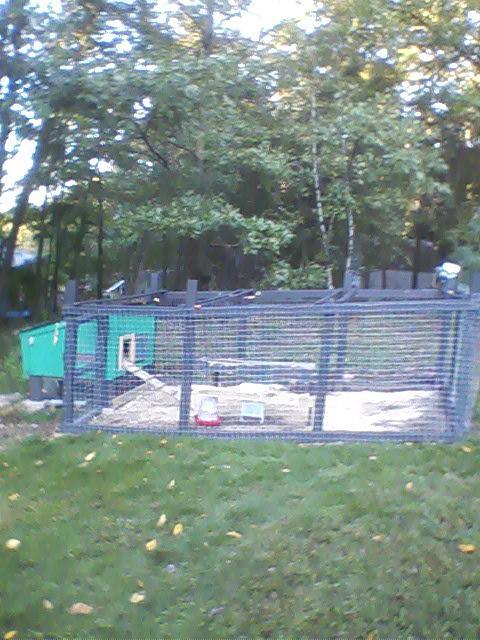If you can tarp off the West side (the long side) as well as the North side (short side furthest from coop), that would eliminate some wind - and therefore some blowing snow or rain. I'm placing straw bales alongside my coop sides (it's 20" off the ground) after the third hard frost (thinking early November here in Illinois). I don't wish vermin to join my hens for the winter! This will help with drafts under the coop, as well as providing some extra supplies for when I need more straw in their run!
Because our coop is behind our barn, the barn protects the western section of the run. So just today, I pulled down some old barn doors to cover the northern edge of the run. This way, the north and west are protected from harsh winds. As for snow, I've got to replace their plastic tarp covered section with pvc plastic roofing (think greenhouse). That's the next project after buttoning up our own home (removing screens and replacing with storms!). If you've got some plywood sheets hanging around, you might put a section on the outside of the run just next to the coop on the west wall (screw it to outside 4x4's). This way, that section is protected really well.
I agree with the other poster - pvc roofing will help you a lot - at least the section closest to the coop. If you're in a seriously snowy region, put lattice or 2x3's down first, then the pvc, then the pvc won't bend so much (and lattice this time of year is cheap!)
I'd move the water to where it's easiest for YOU to refresh. Yes, heated water bowls work great - but remember, the heat also increases evaporation, which means refilling it more frequently. Personally, last late spring, I was refreshing water 3x/day - but they were chicks and made a mess of it quick too! Hoping that now they're older means less refills! And whatever sort of electric connection you have - make sure that's waterproof also! Don't want to find out the water's frozen because the plug got wet with rain/sleet/snow and threw the breaker.
As for food location, you might wish to put it closer to the door. Inside if you can - just because then there's no chance of it spoiling due to getting wet. Darn stuff's too expensive to let go to waste.....
Hope these tips help you. Again, depending on your flock, and your location - prepare as best you know how and see what happens.




